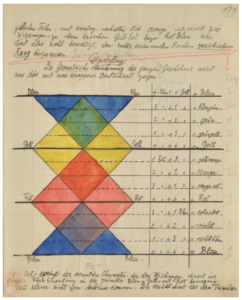Year of Bauhaus
100 years ago in Weimar, Germany Walter Gropius founded the visionary and highly influential design program known as the Bauhaus. Integrating art and craft – a return to craftsmanship – the curriculum began with a foundation course for all students before they moved on to specialized workshops in cabinetry, pottery, metal working, weaving, and other crafts. Only after those practical material studies would the most talented students be able to study architecture.
By envisioning the practice of art, craft, and architecture as a unified whole, Gropius was attempting to create a better world. From his manifesto:
So let us therefore create a new guild of craftsmen, free of the divisive class pretensions that endeavoured to raise a prideful barrier between craftsmen and artists! Let us strive for, conceive and create the new building of the future that will unite every discipline, architecture and sculpture and painting, and which will one day rise heavenwards from the million hands of craftsmen as a clear symbol of a new belief to come.
Among the well-known artists teaching the foundational course was Swiss painter Paul Klee, whose notebooks have recently been made available online by the Zentrum Paul Klee. The online format has the reproduction of the original German text in Klee’s handwriting on the left, and on the right is a printed transcription of the text, also in German.
In case you don’t read German or just want to get an overview, check out ArchDaily’s article about the online publication of the notebooks. It includes quite a number of striking notebook pages (like the one at the head of this post) that reflect Klee’s thoughts on art and color as well as the following description of the notebooks’ importance:
Klee’s style was highly influenced by Expressionism, Cubism, and Surrealism, with his publication “Writings on Form and Design Theory” (published in English as “Paul Klee Notebooks”), held to be as important for modern art as Leonardo de Vinci’s “A Treatise on Painting” for the Renaissance.
Since so much is being written to celebrate this centenary – the Bauhaus existed as a school from 1919 to 1933 – below are links that can help in understanding the wide-ranging and profound influence the Bauhaus has had on design.
100 Years of Bauhaus: What You Should Know About This Milestone Movement (good overview from Dwell Magazine)
The Bauhaus, 1919–1933 (The Met, from their Timeline of Art History; includes links to objects in their collections by Bauhaus artists)
Bauhaus 100 (from Dezeen, a great collection of articles covering individuals, influence, books, etc.)
And finally, the Bauhaus Archiv in Berlin has a trove of information in English on the historical Bauhaus as well as current organizations and activities inspired by the Bauhaus. Try these:
the bauhaus – idea, program, teaching at the Bauhaus, life at the Bauhaus, after 1933, and more
centenary – exhibits and events, most in Germany
the grand tour of modernism, 100 Years 100 Sites – takes you to the grand tour of modernism website that has German and English language options, also lots of photo tours

